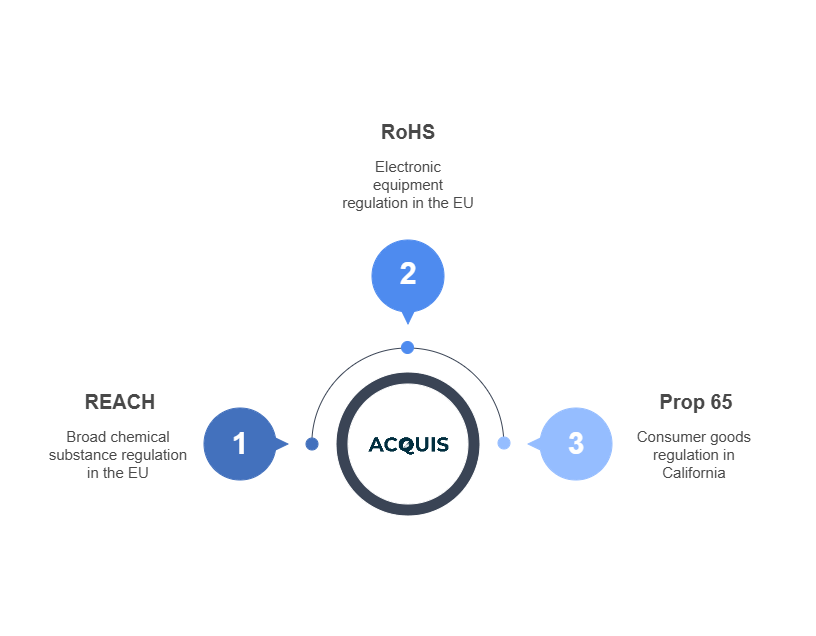Table of Contents
For electronics manufacturers, navigating chemical regulations isn’t optional—it’s mission critical. If you're selling in California, the EU, or the UK, you're already dealing with Proposition 65, RoHS, and REACH.
While they all aim to protect human health and the environment, these three regulations differ wildly in their scope, enforcement, and business impact.
This blog breaks down what makes each regulation unique, and what you actually need to do to stay compliant across the board.
Proposition 65, RoHS, and REACH Regulation Overview
Core Differences: Prop 65 vs RoHS vs REACH
- Substance Lists & Thresholds
- Prop 65: Over 900+ chemicals; any level of exposure could trigger warning requirements unless it’s below the “safe harbor level.”
- RoHS: 10 restricted substances in EEE with ppm-level thresholds (e.g., 0.1% for lead).
- REACH: 200+ SVHCs tracked; registration or authorization required above 0.1% w/w in articles.
- Scope of Regulation
- Prop 65 applies to all consumer goods sold in California—even if manufactured outside the U.S.
- RoHS applies only to electronic equipment.
- REACH covers all chemical substances, including in finished goods, components, and mixtures.
- Compliance Triggers
- Prop 65: Triggered by consumer or occupational exposure.
- RoHS: Triggered by placing EEE on the EU market.
- REACH: Triggered by manufacturing, importing, or using chemical substances in the EU.

What Electronics Teams Must Do
- For Prop 65:
- Assess exposure pathways for each listed chemical in your product.
- Provide clear warnings (on product/packaging/website) if exposure exceeds safe harbor levels.
- Maintain supplier documentation and testing data for audits.
- For RoHS:
- Conduct substance-level testing or obtain supplier declarations.
- Compile a Technical File (EN IEC 63000 standard) to support CE marking.
- Manage Annex III & IV exemptions strategically.
- For REACH:
- Identify and report SVHCs over 0.1% in any article.
- Submit SCIP dossiers if placing articles in the EU.
- Monitor updates to Annex XIV (Authorization) and Annex XVII (Restriction) lists.
Where Prop 65 vs RoHS vs REACH Regulations Overlap
How Acquis Helps Electronics Manufacturers Navigate All Three
Acquis streamlines compliance across Prop 65, RoHS, and REACH with:
- Automated chemical screening at the part and article level
- FMD collection and validation from your entire supply chain
- Prop 65 warning logic and exposure-level flagging
- SCIP and Article 33 automation for REACH
- CE-mark documentation workflows for RoHS
One Platform. Three Regulations. Zero Guesswork.
If you're manufacturing or selling electronics into California or the EU, Acquis helps you simplify the most complex parts of Prop 65, RoHS, and REACH compliance.
